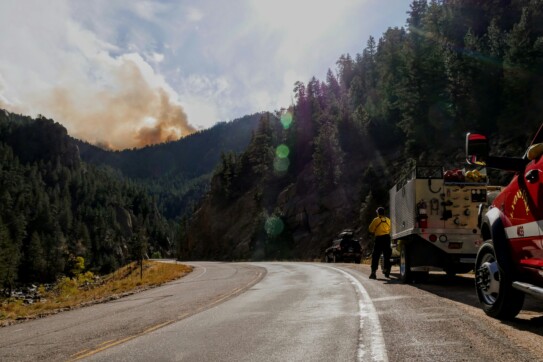10 Tips for Managing Crisis Volunteers in Natural Disasters

In natural disasters, the training and quick action of first responders and emergency services save lives and livelihoods. But there is another crucial force operating in the background of any natural disaster: crisis volunteers.
Relief organizations have a roster of affiliated volunteers who are skilled in the work of disaster response, such as search and rescue. Spontaneous volunteers—selfless individuals who step up in a crisis—also converge on disaster sites. Many do not have specialized skills but do have a passion to help those left hungry or stranded by a flood, hurricane, or fire. What roles do spontaneous volunteers fill?
- Providing meals and laundry services
- Arranging shelter
- Sorting and distributing supplies
- Fielding phone calls and media inquiries
- Assisting with debris removal, childcare, home repair, etc.
Recovery Depends on Volunteers
Response and relief organizations rely heavily on the manpower and goodwill of volunteers in a time of need:
- 95% of Red Cross disaster relief workers are volunteers
- The National Voluntary Organizations Active in Disaster association reports that 9.9 million Americans volunteer annually in natural disasters
Even if your organization’s mission is not focused on disaster relief, in a time of crisis you may be called upon to help, and you also may find yourself with a roster of untested volunteers eager to pitch in. If you don’t have a volunteer management strategy in place, an influx of self-deployed crisis volunteers can increase rather than reduce the chaos.
10 Tips for Managing Crisis Volunteers
Before the next crisis, put these volunteer management strategies in motion so you can help your helpers meet your community’s needs.
1. Screen Every Volunteer
Spontaneous crisis volunteers need to be screened so they can be given suitable roles and be properly registered and trained. Depending on the state of the electric grid and cell service, this can be accomplished on an app or on a handwritten registration form. Record the following:
- Name, address, and phone number
- Availability (times, days of the week, and length of time they can serve)
- Skills (languages, equipment operation, medical, computer, food service, etc.)
- Previous disaster experience
- Task preference (animal care, cleanup, data entry, logistics, etc.)
- Geographic preference for service
- Phase of emergency (response, recovery, mitigation?)
- Resources the volunteer can provide (boat, truck, chainsaw, etc.)
- Emergency contact
The initial screening should be quick but thorough so you can match volunteers to areas of need immediately. Interviews should be followed by safety training and onboarding for each volunteer. This protects volunteers from hazards and protects your organization from risk.
Develop a screening procedure in “normal” times to make crisis screening easier. Catalog the skills and roles needed in a potential disaster along with a database of individuals willing to step up in a crisis. Keep appropriate waivers and liability forms ready for volunteers to sign.
2. Set Clear Expectations
So that volunteers understand their responsibilities, create short job descriptions. Spontaneous crisis volunteers should be filling a named role that meets a clearly defined need.
A trained staff member should serve as a volunteer coordinator and primary point of contact. If you have a large influx of volunteers, your coordinator may be focused on referring volunteers to other organizations with the capacity to manage a wide-scale recovery operation.
3. Identify the Leadership Potential of Your Volunteers
In a natural disaster, you need skilled, capable volunteers to manage tasks and other volunteers. If you quickly identify those with management backgrounds, as well as those willing to work hard and communicate with authority, you can begin to delegate suitable assignments.
4. Prep a “Go Kit”
As volunteers arrive for their assignments, provide them with necessary supplies, such as volunteer ID, maps, special equipment, and contact information for volunteer coordinators.
Consider how and where you might set up a Volunteer Reception Center if needed, particularly in the response phase when most spontaneous volunteers show up en masse. Scouting out a central location with adequate parking and a power supply minimizes confusion for incoming volunteers and streamlines your processes when the crisis is unfolding.
5. Create Backup Communications
You need cell numbers for every volunteer and volunteer coordinator, emergency contact numbers, and an efficient method of disseminating information in the field if cell service is spotty. It is best to expect zero cell reception in a disaster zone.
6. Schedule Shift Work
Disaster work is complex and intense. Prevent burnout by scheduling volunteers in shifts of two or four hours.
Automate volunteer scheduling so you can be sure a supervisor is on-site at the same time as each volunteer. Automation also ensures you have the right mix of skills and talent where and when your community needs it in the wake of a disaster.
7. Provide Support for Volunteers’ Basic Needs
Make arrangements so volunteers have access to food, water, and facilities. It is not unusual for crisis volunteers to keep pushing themselves when they should take a break. Remind them to hydrate and rest.
8. Thank Your Volunteers
You might not have the opportunity to formally thank your volunteers until the disaster response concludes, so take advantage of every interaction to let them know how much you value their service. After the disaster, recognize your dedicated volunteers with a formal award or certificate. You can even go a step beyond by nominating an extraordinary volunteer for the Daily Point of Light Award or the President’s Volunteer Service Award.
9. Capture the Data
Reporting is a requirement for nonprofit organizations, even in a disaster. Data allows you to tell your story to your board, community, donors, and to your internal teams so you can develop better processes for the future. Volunteer hours in a natural disaster may also be eligible for reimbursement from the government. Here’s what to track:
- Number of volunteers
- Number of volunteer hours
- Number of meals served
- Number of families or individuals served
- Number of houses worked on (for cleanup or rebuilding)
In the course of registering volunteers, you will also have captured their information. Add them, if they are willing, to your affiliated volunteer roster and to your constituent relationship management (CRM) platform so you can keep them apprised of opportunities to support your mission in the future.
10. Mitigate Risks
Before deploying spontaneous volunteers to a disaster zone, check your insurance policy. You might need a rider, so discuss coverage with your insurance agent.
Volunteers must be made aware of the risks they face, be equipped with appropriate safety gear, and be willing to be coordinated by local emergency management. Include the following in your volunteer management plan:
- Waivers and liability forms, signed by each volunteer
- Safety training and orientation documents, signed by each volunteer
- First aid kits and automated external defibrillators (AEDs) on site, if possible
Be Prepared to Mobilize
Natural disasters need all hands on deck, and that could include your organization and the volunteers who support it. Prepare for disasters like earthquakes and superstorms now by creating or updating your crisis volunteer management strategy so your team is ready to welcome and mobilize the volunteers who show up to help.
